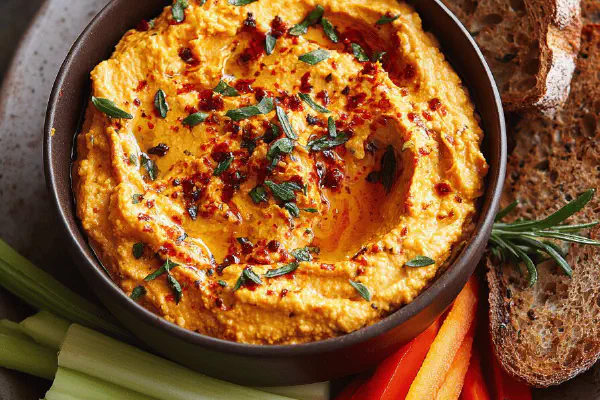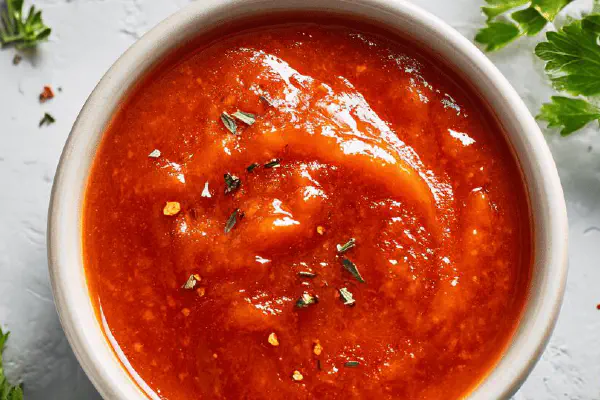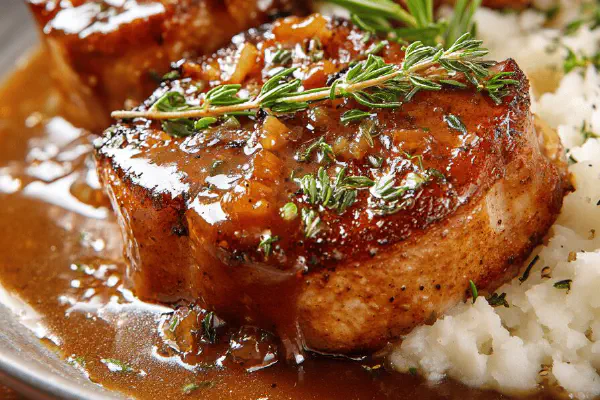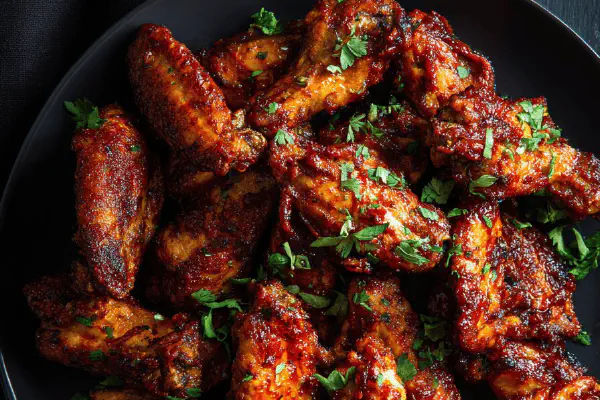Smoky Tangy BBQ Sauce

By Emma
Certified Culinary Professional
Ingredients
- 1 medium onion, finely chopped
- 3 cloves garlic, minced
- 45 ml olive oil (3 tablespoons)
- 200 ml chicken broth (¾ cup)
- 50 ml apricot preserves (3 tablespoons plus 1 teaspoon)
- 15 ml Dijon mustard (1 tablespoon)
- 15 ml chipotle in adobo sauce (1 tablespoon)
- 12 ml red wine vinegar (about 2½ teaspoons)
- 12 ml brown sugar (2½ teaspoons)
- 15 ml prepared horseradish (1 tablespoon)
About the ingredients
Method
- Heat olive oil in medium saucepan over medium heat until shimmering but not smoking.
- Add chopped onion and minced garlic, sweat gently until translucent and fragrant–should smell sweet, about 6-8 minutes. Avoid browning; you want softness for mellow flavor.
- Pour in chicken broth, apricot preserves, Dijon mustard, chipotle in adobo, red wine vinegar, brown sugar, horseradish.
- Bring mixture to a steady simmer, small bubbles breaking surface.
- Reduce heat slightly, let simmer 7-9 minutes. Watch viscosity—sauce should thicken slightly, hold spoon coating but stay pourable.
- Remove from heat. Let cool a bit to avoid blending hot splatters.
- Pulse in blender or use immersion blender to partially purée, leaving some texture–not totally smooth; texture gives interest and bite. Adjust salt if needed.
- Let sit for 10 minutes before using so flavors meld. Reheat gently if serving warm.
Cooking tips
Chef's notes
- 💡 Watch onion and garlic closely during sweat stage. Medium heat essential. No browning allowed; black bits bring bitterness. Smell shifts from sharp to mellow sweet signals readiness. Olive oil shimmering but not too hot keeps gentle cook. Patience vital here. Timing roughly 6-8 minutes; slight translucency with soft edges. Rushing ruins foundation. Use this aroma cue to start adding liquids before bite fades.
- 💡 Bring sauce to small steady simmer – bubbles breaking surface, not rolling boil. Boiling causes thin texture, evaporates moisture too quick. Sauce needs slight cling to spoon; not glue but thicker than runny. Adjust heat down after first bubbling starts. Timing 7-9 minutes. Stir occasionally to avoid scorching bottom, especially with sugar in mix. Visual hobby—tiny bubbles and faint steam tell you time’s close.
- 💡 Partial blending important. Full smoothness kills texture and rustic feel. Blend until just chunky. Some intact bits add interest and bite. Impulse might push toward pureeing. Resist it. Use immersion blender briefly or few pulses in regular blender. Let cool slightly first to avoid hot splatter. Taste after blending to check seasoning; salt and acidity are flexible here.
- 💡 Substitutions matter. Chicken broth base can swap for vegetable broth for vegetarian option. Apricot preserves replace ketchup for cleaner sweetness; peach or pineapple preserves alternate well but watch acidity shift. Chipotle in adobo replaces Worcestershire – adds smoky heat not just spice but depth. Dijon mustard key for acidity and pungency; white wine vinegar too sharp, red wine vinegar preferred but apple cider vinegar works with different tone.
- 💡 Let sauce rest at least 10 minutes off heat after blending. Flavor melding critical here; sauce softens harsh edges, rounds out acidity and heat. Reheat gently if desired – no sudden boiling; risk burning volatile aromatics. Watch sauce closely if warming again; simmer low minimal heat. Use as glaze or dip. Sauce texture thick enough for coating but flows well.
Common questions
Why no browning onion?
Bitter notes form fast with color. Sweating gentle draws sweetness out. Burnt spots taste off. Texture changes too – power down heat to keep silky, soft base not caramelized. This shadow faint but impacts final flavor deeply.
Can I use ketchup instead preserves?
You can but expect different finish. Ketchup strong tomato tang sharper, sweeter usually. Preserves cleaner, fruitier profile, less acid bite. Also color change obvious. Peach or pineapple preserves another swap – each shifts sauce personality, acidity and sweetness balance.
What if sauce too thin after simmer?
Keep simmering low longer, stir often. Reduce batch to thicken. Avoid high heat or boiling; breakdown flavors and burn bottom. Another fix – add tiny bit cornstarch slurry but mix well. Patience wins here best though.
Storage tips?
Refrigerate in airtight container. Lasts up to a week. Freeze okay, causes texture changes–fruit bits soften more on thaw. Warm gently before use. No microwave blasts. Stir before applying glaze or dip again; texture settles.



